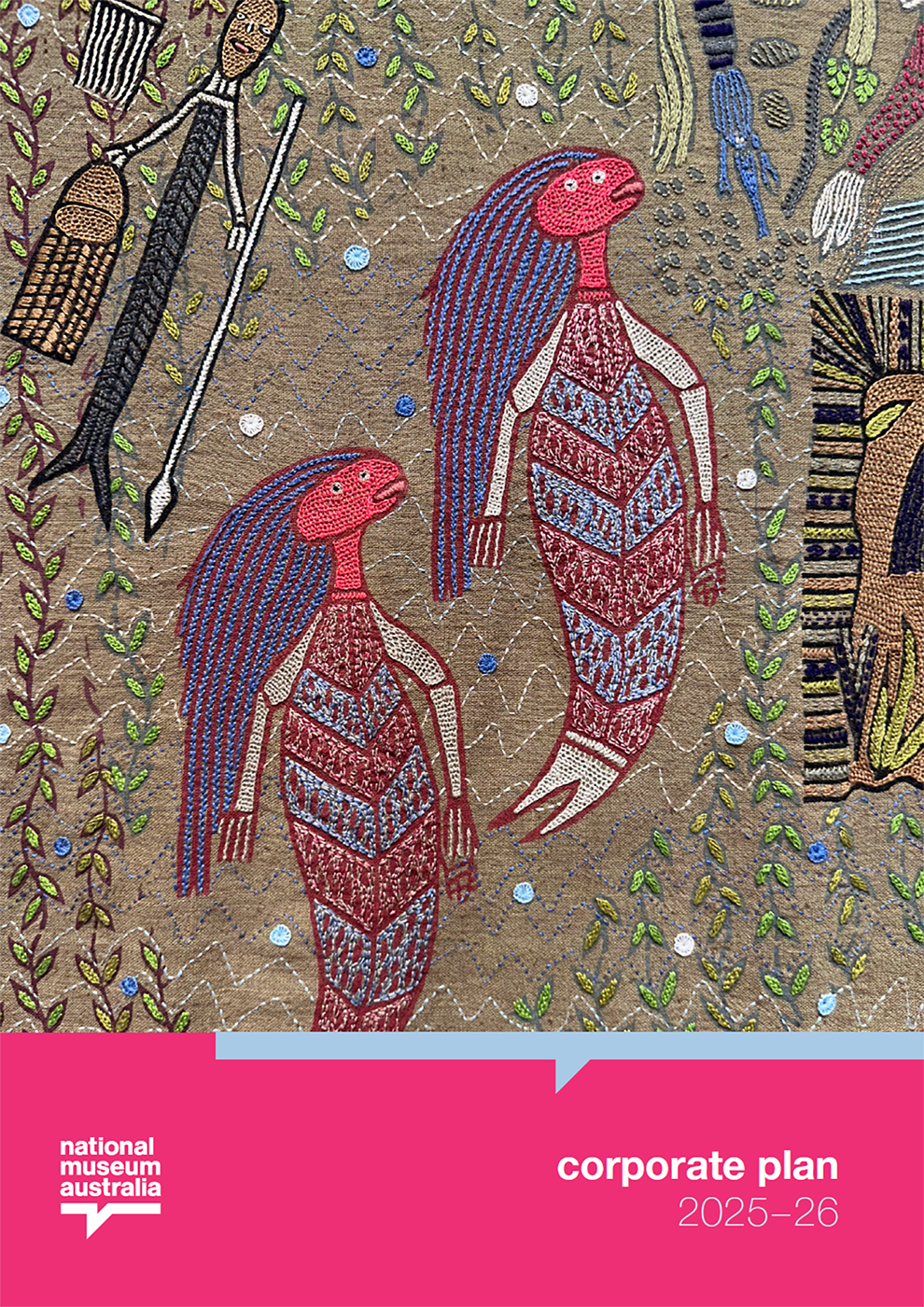
The 2025–26 Corporate Plan sets out the National Museum of Australia's priorities and the Minister for the Arts’ expectations to ensure we deliver on our purpose, which is:
To increase awareness and understanding of Australia’s history and culture by managing the National Museum’s collections and providing access through public programs and exhibitions.
Yawkyawk Embroidery, 2024, Bábbarra Designs with Tharangini Studios and Porgai Artisans Studio, pigment print, woodblock print and Lambadi embroidery on handwoven kala cotton
Featuring: Yawkyawk (Young Woman Spirit) by Owen Yalandja; Yawkyawk La Kunmadj (Mermaid and Dilly Bag) by Jennifer Wurrkidj; Baby Mermaid by Verity Bangarra; Yawkyawk (Young Woman Spirit) by Janet Marawarr; Seaweed by Belinda Kernan.
© Owen Yalandja, Jennifer Wurrkidj, Verity Bangarra, Janet Marawarr, Belinda Kernan / Copyright Agency, 2025
Yawkyawk are young female Ancestral Beings found in the freshwater pools and streams of Western Arnhem Land in the Northern Territory.
You may also like